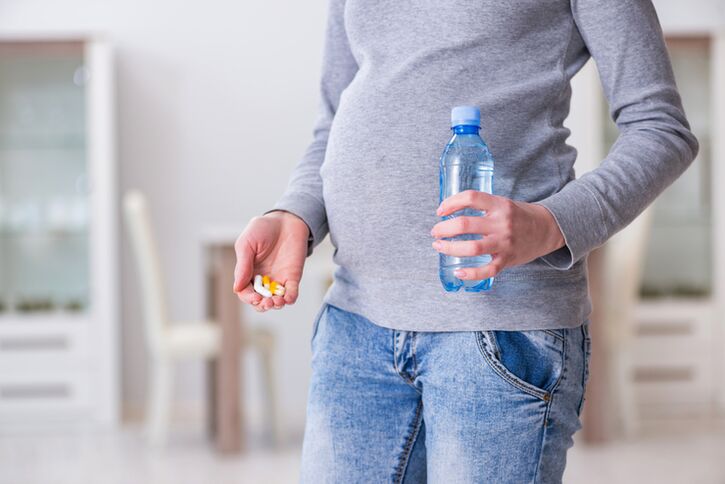
The varicose veins of the small pool in women are characterized by their increase in diameter and incemability.Most often, this condition is associated with altered venous valves.Despite a sufficiently high prevalence, this disease is rarely diagnosed.
This is due to the variety of symptoms, the main one of which is still pain syndrome.It is characteristic of gynecological, neurological and gastrointestinal pathologies.Sometimes the VRVMT is disguised as diseases of the musculoskeletal system in particular, under rooker syndrome and osteoarthritis of the hip joints.
Description and reasons
The veins extended in the basin are not always visualized, because they are often located deep under the skin.This is one of the reasons for the complexity of the diagnosis.With VRVMT, the elasticity and tone of the veins decrease, blood circulates worse and begins to stagnate.Due to the blocking and bloating of the veins, an obstacle is created for the flow of blood.
The BRVMT mechanism is based on the failure of the ovarian veins, which is why blood is retreating, and reflux occurs.This leads to an increase in intravenous pressure and the stagnation of blood, as well as the formation of additional circles of blood circulation - collateral.
The most important starting factor is dysplasia - underdevelopment of connective tissue, which is approximately in a third of the population.Dyplasia is a congenital defect in which the level of collagen necessary for the force of the vessels is reduced.
During the postmenopausic period, the severity of varicose veins decreases, which indicates in favor of the theory of hormonal influence on the state of the veins.
Considerably weakening the tone of the venous system is capable of progesterone - a female sex hormone, which is also called "pregnancy hormone".On the one hand, it reduces the uterine tone, thus preventing a miscarriage, and on the other hand, it weakens the walls of the blood vessels and causes their expansion.The situation is aggravated by the growth of the uterus, which is increasingly supporting the large veins and causes the formation of bypassing blood circulation, collaterals.This is why VRVMT is very common during pregnancy.
Increased risk factors for developing varicose veins include the following elements:
- Too high physical activity or, conversely, insufficient;
- multiple;
- multiple or complex birth;
- Gynecological diseases - endometriosis, myoma, etc.;
- Long -term contribution of steroid hormones, including contraceptives.
Types and diplomas

The varicose veins in the basin are of two types.The first type is called virtues of vulva and perineum, the second - the syndrome of the pelvic venous plethora.The two types can develop in isolation or combine with each other, which occurs most often.Pregnant women are mainly faced with damage to vulvar veins which, in more than 91% of cases, is transmitted independently after childbirth.
VRVMT is also classified by origin and location.Originally, varicose veins were divided into primary and secondary.The primary varicose veins develop due to the insufficiency of venous valves.Pregnancy becomes its trigger.The secondary varicose veins are due to diseases of the system.
Depending on the location of VRVMT, it is total when all the basin veins are affected and, partial, which selectively affects one or more veins.Depending on the diameter of the veins, 3 degrees of gravity are distinguished:
- 1 tablespoon.- up to ½ cm;
- 2 tablespoons.- 0.6 - 1 cm;
- 3 tablespoons.- More than 1 cm.
Symptoms
Symptoms of varicose veins include:
- Painful burst and heaviness at the bottom of the abdomen;
- an increase in the number of discharges;
- Various violations of urination;
- A quick weight gain is already at the start of gestation.
Pain, as a rule, increases after sex, hypothermia, long walking or position.With damage to surface veins, veins and a bluish red vascular mesh can appear on the genitals and at the top of the hips.
Often, signs of varicose veins resemble cystitis: urlation strongly painful in small portions.
Closer to the end of pregnancy, burn and swelling in the genitals may appear.A similar symptom requires special attention, as the development of inflammation or the rupture of the veins which can cause serious bleeding is not excluded.
What is the dangerous VRVMT
Varicose varicose veins can give several complications that represent a danger to life.First of all, it is thrombophlebitis or thromboembolia - inflammation of the dilated veins, leading to the formation of blood clots.If the blood clot - a blood clot - will obstruct the ship, the blood supply of the placenta will be blocked.The result of the blocking will be a fetoplacental failure and fetal hypoxia.
Another serious complication is the threat of premature miscarriage and birth, due to a violation of blood circulation.
Due to the enlarged veins, doctors can prohibit naturally giving birth to minimize the risk of rupture of the veins, threatening internal or uterine bleeding.
Treatment

In pregnant women, drug therapy is limited to taking phlebotonics and anti-tromboid drugs.With pronounced pain, the use of funds from the non-steroidal anti-inflammatory group (NSAIDs) is authorized.If there is a threat of child's oxygen famine, the treatment is carried out in a hospital using antihypoxy preparations.
From the fourth month, you can carry out a phlebosklerizing operation, during which a venosclerosing agent is introduced into the affected veins.The effect of the procedure is evaluated after 7 days, if necessary, it is repeated.All week after surgery, it is necessary to wear compression linen.You can carry out an involution of the veins in a single session, but more often than not, you must carry out 3-4 phlebosclerosis procedures.
Persistent pain syndrome and a large diameter of advanced veins exceeding 1 cm, is an indication of surgery.It can only be carried out during the first 2 trimesters of pregnancy with soft methods of laser or radio coagulation.If the VRVMT is caused by the retroflection of the uterus, plastic surgery is carried out on the uterine ligaments.
Doctors advise pregnant women with diagnosed varicose veins from the small pelvis and exercises that prevent the stagnation of blood in the basin.Wearing a compression bandage and a diet will help slow the progression of the VRVMT.
The menu must be done in such a way that it mainly contains plant foods, as well as dairy products and cereals fermented in sufficient volume.
A good effect gives ascending contrast or perineal shower.During the procedure, a woman sits on a special seat in the form of a ring, the water is supplied from below and directed towards the crotch.The duration of the procedure is 3 to 5 minutes, the course of treatment includes 15 to 20 sessions.
The prevention of development and progress of varicose veins is mainly reduced to optimize motor activity and nutrition.The most important thing is to exclude long -term static and dynamic loads, as well as adjust the diet, to introduce more fruits and vegetables into the diet.In the early stages of varicose veins, exercise therapy and respiratory gymnastics, bearing knitting compression products.


















